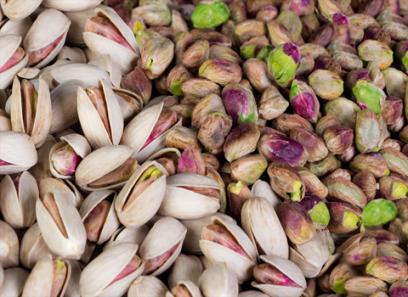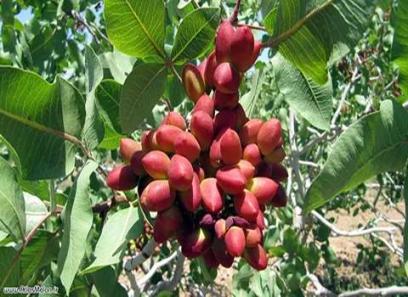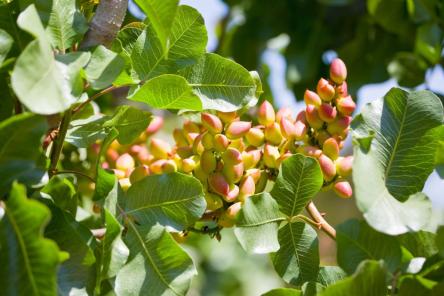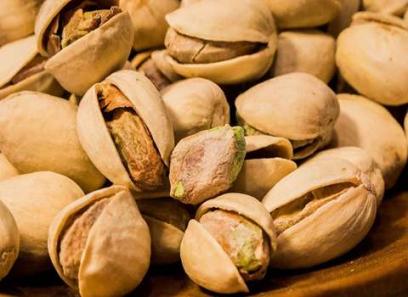Pistachio plants, scientifically known as Pistacia vera, have gained immense popularity worldwide for their delicious and nutritious nuts.
.
 As the demand for pistachios continues to rise, so does the opportunity for entrepreneurs and farmers to delve into the thriving business of pistachio plant cultivation.
As the demand for pistachios continues to rise, so does the opportunity for entrepreneurs and farmers to delve into the thriving business of pistachio plant cultivation.
This article explores the potential benefits, challenges, and tips for successfully venturing into the profitable world of pistachio plant farming.
Market Dynamics and Growing Demand: Pistachios are renowned as a healthy snack, rich in protein, dietary fiber, antioxidants, and essential minerals.
This has fueled their demand, making them a favorite among health-conscious consumers, gourmet cuisines, and the ever-growing vegan population.
According to recent market reports, the global pistachio market is expected to witness significant growth, reaching a value of over $5 billion by 2025.
This skyrocketing demand presents a promising opportunity for entrepreneurs in the pistachio plant business.
Favorable Growing Conditions: Before getting started, it is crucial to understand the optimal growing conditions for pistachio plants.
These trees thrive in climates with long, hot summers and low humidity, making regions like California, Iran, and Turkey ideal for their cultivation.
However, several new areas around the world, such as Australia, Greece, and South Africa, have also successfully ventured into pistachio cultivation.
..
 Considerations for Entrepreneurs:
Considerations for Entrepreneurs:
1. Selecting the Right Variety: There are various pistachio cultivars available globally, each with specific characteristics suited for different climates and market demands.
Consulting with local agricultural authorities or expert consultants can help farmers narrow down the suitable variety for their specific region and market.
2. Understanding the Growth Cycle: Pistachio plants are long-term investments that take several years to bear substantial harvests.
It is crucial to comprehend the growth cycle, which typically consists of three stages: juvenile, pre-bearing, and bearing.
During the first few years, farmers must focus on nurturing the trees and ensuring proper irrigation and nutrient management.
3. Land and Infrastructure Requirements: Pistachio plants thrive in well-drained soil with a pH range between 7 and 8.
Additionally, access to adequate irrigation systems, as pistachio plants are drought-tolerant but require regular watering during crucial growth periods, is essential.
Investors should consider the land size and infrastructure needed for optimal growth and harvesting.
4. Pest and Disease Management: Like any other crop, pistachio plants are susceptible to specific pests and diseases.
Comprehensive pest and disease management strategies, including regular monitoring, preventive measures, and timely interventions, are crucial to ensure a healthy harvest.
Operational and Financial Aspects: Starting a pistachio plant business requires a detailed operational plan, including setting up an orchard, sourcing high-quality seedlings, implementing the right irrigation systems, and ensuring access to skilled labor.
Financial considerations include budgeting for initial investments, ongoing maintenance costs, and a long-term perspective, as the trees may take around five to seven years before reaching full production capacity.
Conclusion: The business potential of pistachio plant farming is immense, with a growing global demand for these nutritious nuts.
By understanding the optimal growing conditions, selecting the right variety, and focusing on pest and disease management, entrepreneurs can successfully enter this lucrative market.
With a robust operational plan, the right investments, and dedication, the pistachio plant business can provide significant financial rewards while contributing to the sustainable agriculture sector.
Marketing and Distribution: A key aspect of running a successful pistachio plant business is developing effective marketing and distribution strategies.
Establishing partnerships with wholesalers, distributors, and retailers will help ensure a strong market presence and a steady demand for your products.
Participating in industry trade shows and exhibitions is an excellent opportunity to showcase your pistachio products and network with potential buyers.
In addition, consider creating an online presence through a website or social media platforms to reach a wider audience and build a loyal customer base.
Utilize digital marketing techniques such as search engine optimization (SEO) and content marketing to increase visibility and generate leads.
Focus on highlighting the quality, unique flavors, and health benefits of your pistachio products to attract buyers.
Quality Control and Value Addition: To succeed in the pistachio plant business, maintaining the highest quality control standards is essential.
Invest in state-of-the-art processing equipment and ensure thorough cleaning, sorting, and packaging of the nuts to meet customer expectations.
Implementing a comprehensive quality control system will not only guarantee customer satisfaction but also enhance your reputation within the market.
…
 Furthermore, explore value addition opportunities to diversify your product range and increase profitability.
Furthermore, explore value addition opportunities to diversify your product range and increase profitability.
You can consider producing value-added products such as flavored pistachios, roasted nuts, pistachio butter, or incorporating pistachios into other food products like ice cream, chocolates, and baked goods.
These innovative offerings can help differentiate your brand and attract a wider customer base.
Government Support and Sustainability: Many governments provide support and incentives for farmers entering the pistachio plant business as part of their efforts to promote sustainable agriculture and boost the economy.
Research grants, subsidies, and technical assistance programs are often available to help farmers with the establishment, maintenance, and expansion of their pistachio orchards.
Stay informed about any government initiatives and seek assistance where possible to maximize your chances of success.
Furthermore, incorporating sustainable farming practices is crucial for the long-term viability of your pistachio plant business.
Adopt water-efficient irrigation techniques, implement soil conservation methods, and explore renewable energy options to minimize your environmental impact.
Emphasizing sustainable practices will not only contribute to the preservation of natural resources but also enhance your brand reputation and appeal to environmentally conscious consumers.
Conclusion: The pistachio plant business presents a lucrative opportunity for entrepreneurs looking to enter the flourishing nut industry.
By understanding the market dynamics, selecting the right variety, focusing on quality control, implementing effective marketing strategies, and embracing sustainability, you can establish a successful venture.
With dedication, perseverance, and a strong business plan, the pistachio plant business has the potential to yield significant financial gains while contributing to the growing demand for healthy and delicious pistachio products.




